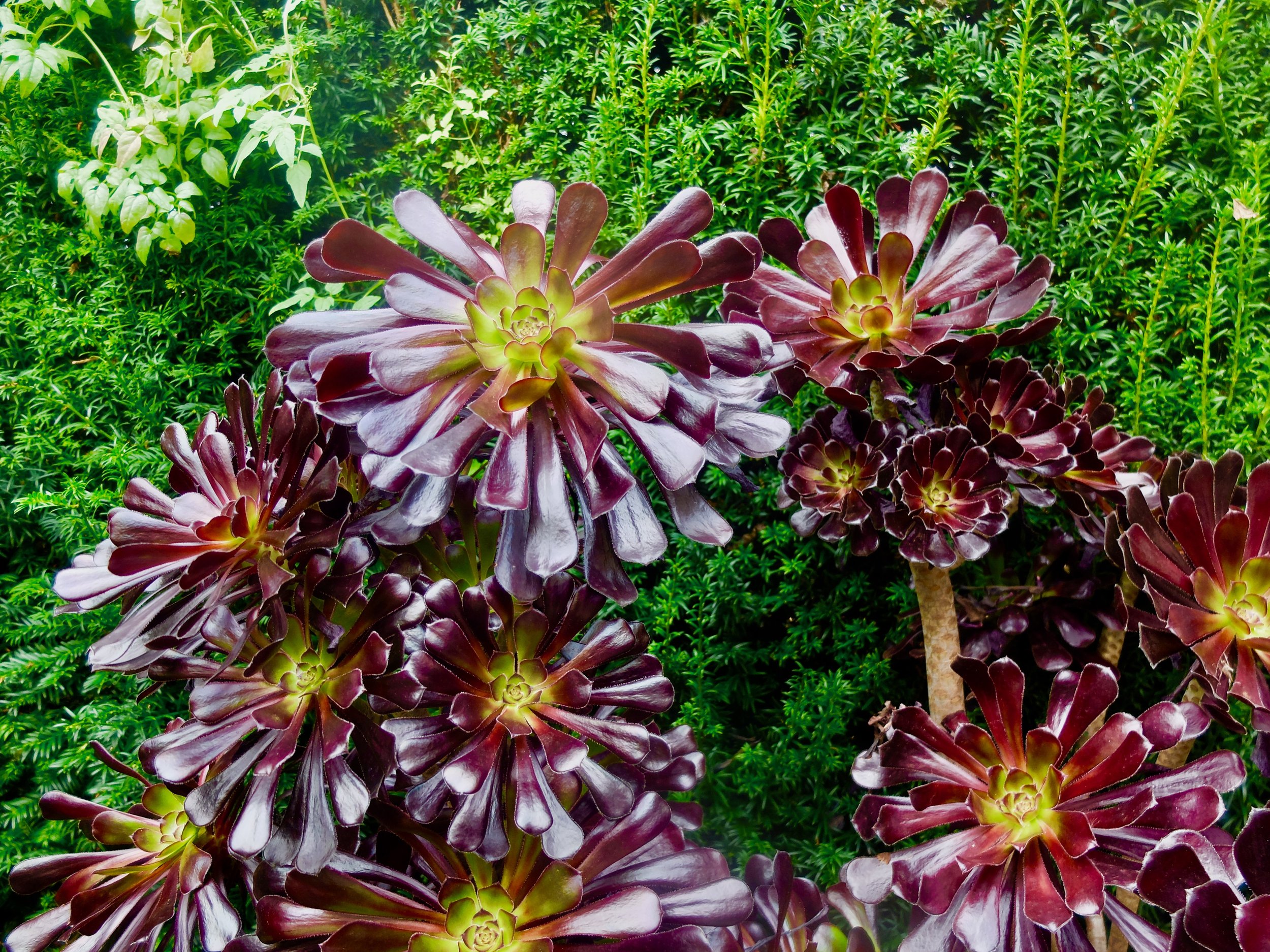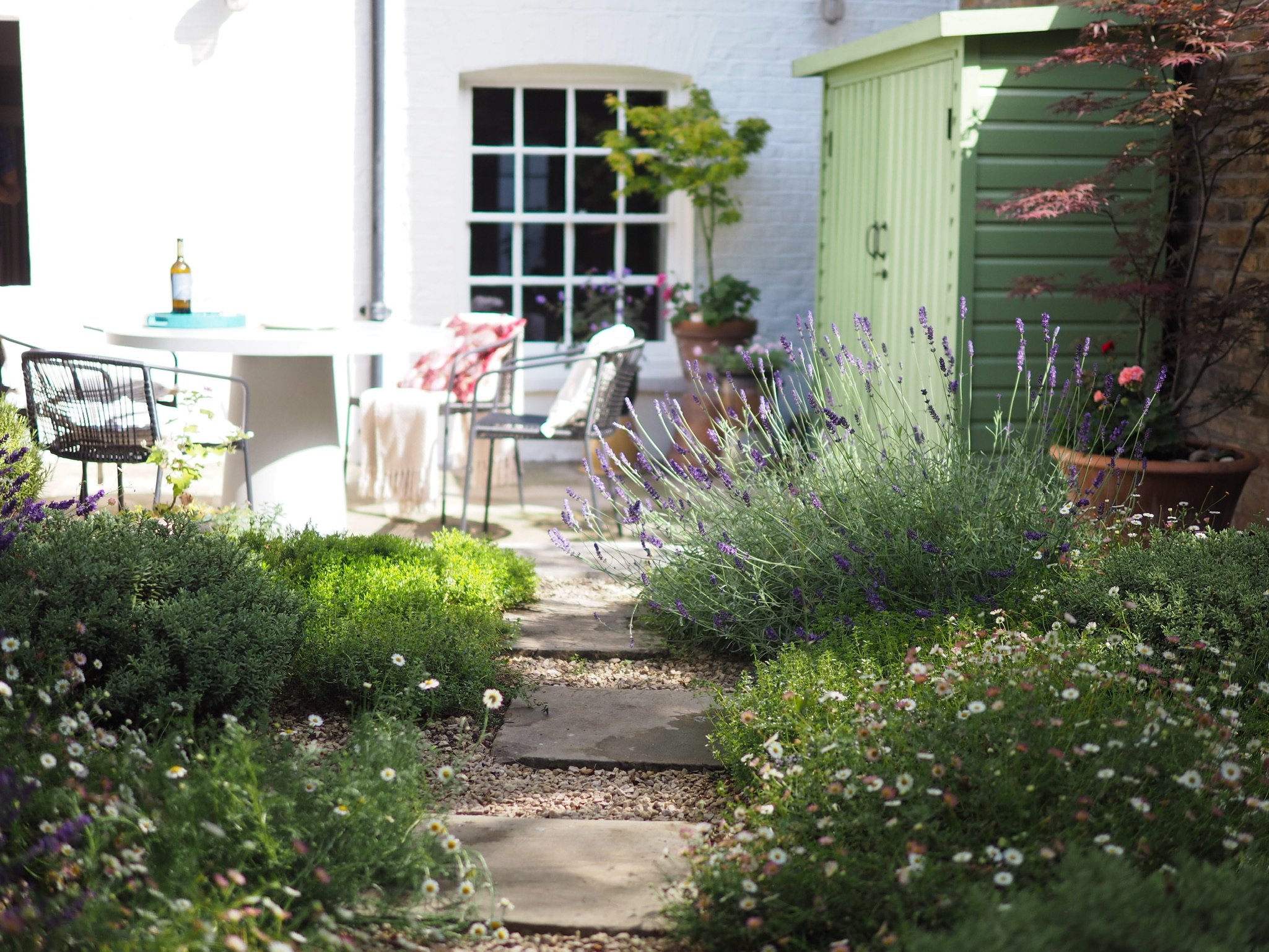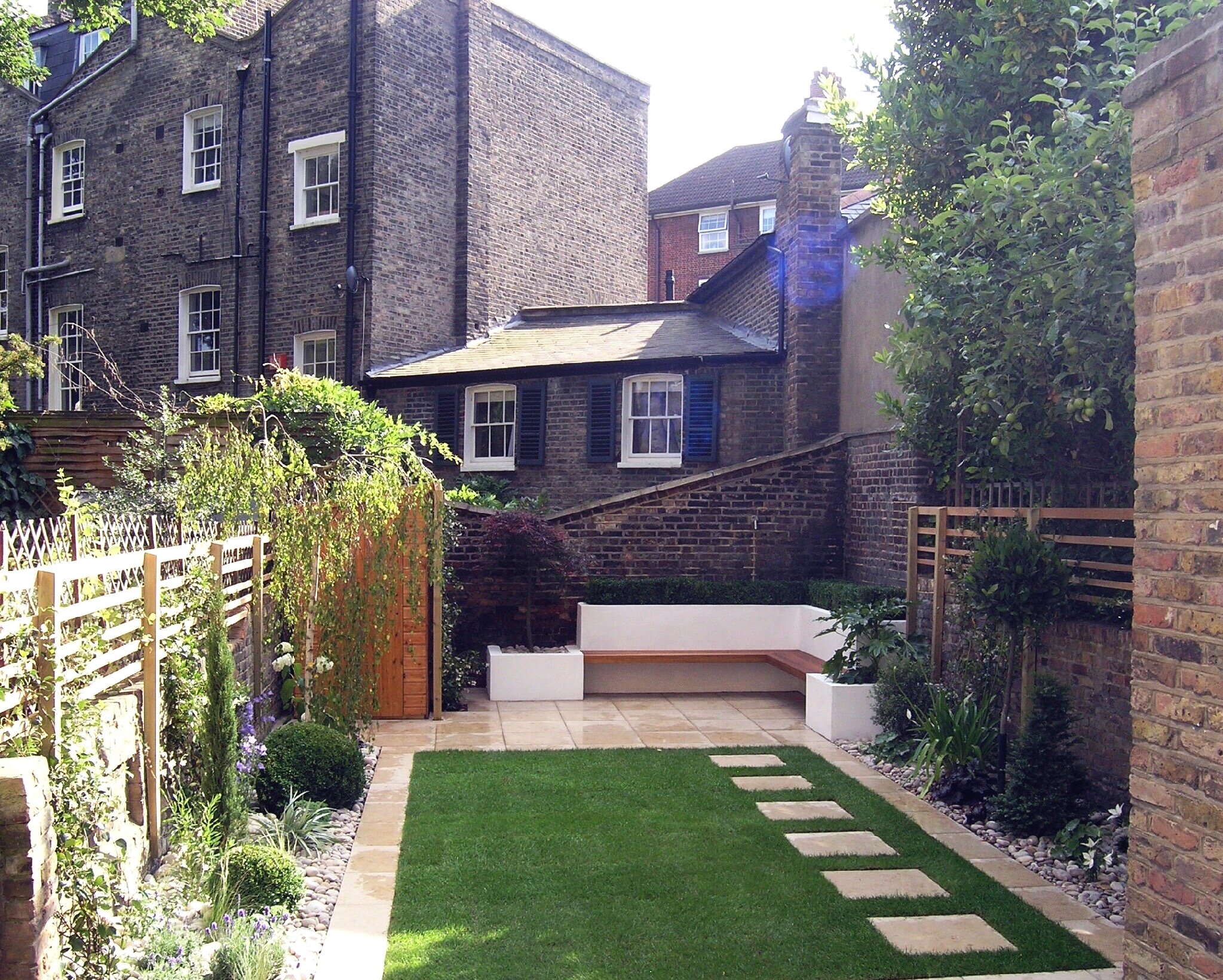Autumn interest
Harriet Stigner
Imagine a garden and visions of spring and summer abound, yet autumn can be the crowning season when London gardens are at their most glorious.
We’re so besotted with our gardens at this time of year that we could have gone on adding photographs forever! Here are some top tips for adding interest to the garden in this rich and inspiring season.
We planted this generous pear tree in one of our NW1 gardens. Whether grown in espaliers against a garden wall, as formal standard trees, or in rambling branches that lend a cottage garden feel, autumn is the season of harvest, and nothing spells joy and abundance like ripening fruit.
The season of fruitfulness
Often a surprising element in London gardens, we love the way that including fruit in our planting schemes can capture interest and excitement.
Whether you chose to add formal interest with an espaliered or standard tree, to evoke an abundant cottage garden with heavily laden damson and plum boughs, or to nod towards more exotic climbs with a shady fig tree, fruits add colour, interest and texture that look as delicious as they taste.
Mixing low-maintenance annuals and perennials in harmonious colours, as with these rich autumnal dhalias and achilleas, will bring your boarders to life in autumn. Due to the warmer London temperatures, we find that we can, treat dahlias as perennials by mulching the bulbs, without having to lift them from our beds and containers.
Paint by flowers
Whether you’re attracted to a blaze of autumn colour in late flowering achillea and dahlias, or the subtle purples and pinks of asters and cyclamen, an autumn planting sings all the brighter when the early evenings draw in.
Allowing some seed heads, like Achillea, to remain in your boarders can maintain structure and interest and support overwintering birds, boosting the biodiversity of your London garden design.
Structure and texture
Allowing some perennial seed heads to remain in your boarders can maintain structure and interest and support overwintering birds, boosting the biodiversity of your London garden design.
Similarly, the foliage of ornamental grasses like this feathery Nassella tenuissima can provide coverage that helps local biodiversity to survive exposure. In addition to the texture and tone that they add to your boarders, they’re incredibly sustainable choices, and can be counted on to look fantastic after the fiercest summer heatwave.
Our favourite sedum variety ‘Autumn joy’ looks resplendent with complimentary deep purple and burnished red foliage.
Beautiful, sustainable, low maintenance
Beauty and sustainability often make easy bedfellows in autumn boarders, particularly with perennial plants like sedums.
Aeonium arboreum ‘Cylcops” is another striking sedum that looks fantastic in late summer and autumn months.
We always ensure our designs and planting schemes are everlasting, with species chosen to maintain a strong and harmonious impact year after year.
Reclaimed materials provide the perfect backdrop for autumn foliage in this NW1 front garden.
A complimentary London canvas
We believe that London looks especially beautiful in autumn, and it’s not just because of the crisp low light, but due to the beautiful, reclaimed materials that harmonise with the local period architecture.
As well as being a sustainable choice, reclaimed materials age beautifully and look as attractive in bad weather and on grey days as they do in blazing sunshine.
We like to consider how planters and window boxes can harmonise with our garden designs, making our planting schemes sing. The deep red Heuchera used in the this windowbox speaks to the rich leaves of many specimen acers, and they can be found in a rich array of autumn russets and golds too.
Windows to an autumn world
When planning a planting scheme, we always consider how window boxes and planters can harmonise with our garden designs, lending charm and character to the entire property.
Nothing brings the season to life like lighting a garden fireplace or firebowl. The tall chimney is an incredible focal point to this Compton Avenue garden design in Islington.
Autumn fires
Outdoor lighting, firebowls and fireplaces come into their own in autumn, for not only do they create a striking atmosphere in your garden, they draw people out into the space, making inviting areas to socialise in.
Showy Dhalias and ripening apples - two of the glories of autumn in the garden.
Looking ahead
As gardeners, we are always planning ahead, and autumn is the perfect time to plant spring bulbs and summer meadows for next year.
Whenever enjoying the varieties of the season, cast your mind into the year to come and imagine what tapestries of light and colour you might like to enjoy in future.
As Audrey Hepburn said -
To plant a garden is to believe in tomorrow.






















































